The Chocolate Cichlid is a fish that catches the eye. Its deep brown color looks like melted chocolate. This fish lives in rivers in South America. It likes warm, slow-moving water with plants and hiding spots.
Table of Contents
These fish can grow up to 10 inches long. They have big eyes and a round body shape. In the wild, they eat small fish, bugs, and plants. In tanks, they’ll eat most fish foods.
The name Hypselecara temporalis comes from Greek words. “Hypselos” means high, “kara” means head, and “temporalis” refers to the sides of the head. This name describes the fish’s tall forehead and cheek area.
Chocolate Cichlids are part of the Cichlidae family. This big fish family has over 1,700 types of fish! They’re related to other cichlids like angelfish and discus fish.
These fish are fun to watch. They’re smart and can learn to know their owners. Some people say they act like water dogs! They’re peaceful for cichlids but can be a bit pushy with smaller fish.
In fish stores, you might see them called Chocolate Cichlid, Emerald Cichlid, or Keyhole Cichlid. The “Emerald” name comes from a green shine they sometimes have.
Scientists first wrote about this fish in 1862. A man named Albert Günther described it. He was a doctor who loved to study fish.
Chocolate Cichlids like to swim in the middle and bottom of tanks. They dig in the sand and move plants around. It’s fun to watch them make their home just how they like it.
These fish can live for 10 to 15 years with good care. They lay eggs on flat surfaces and both parents help care for the babies. This teamwork is neat to see!
A fun fact is that Chocolate Cichlids can change color based on their mood. When they’re happy and healthy, their color is richer and deeper.
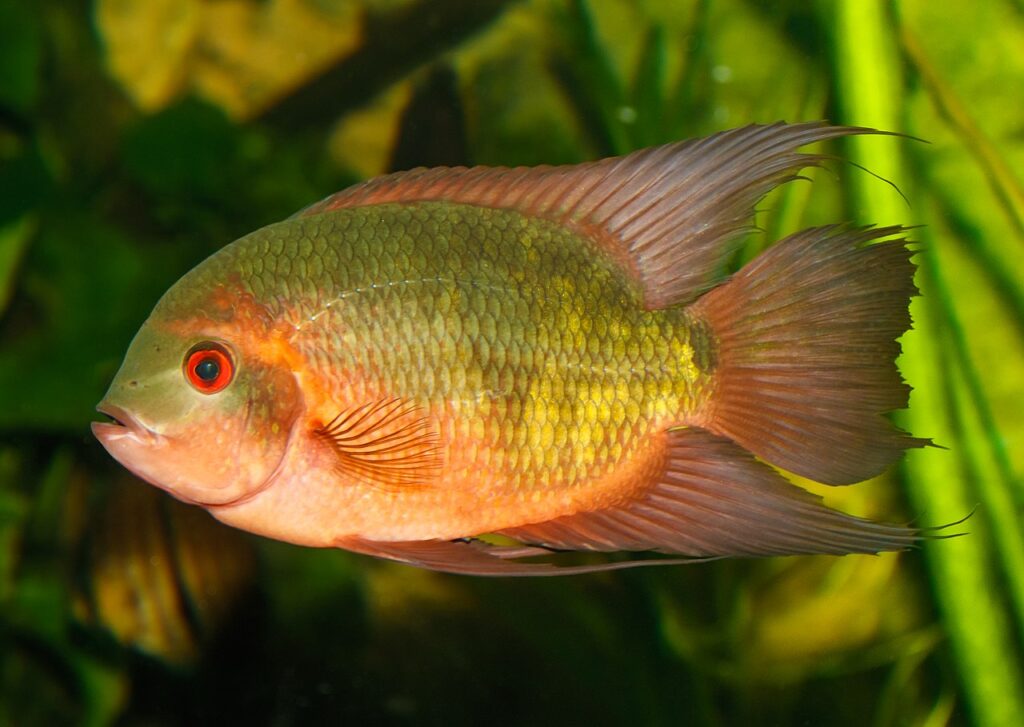
Chocolate Cichlid Key Information
The Chocolate Cichlid is a fascinating fish known for its rich, deep brown coloration that resembles melted chocolate. This stunning hue can vary from light tan to dark coffee, often with a beautiful green sheen that gives them an emerald-like quality in certain lighting. Some individuals may display subtle patterns or markings, adding to their unique appearance. Their large, expressive eyes and sleek body shape contribute to their striking presence in any aquarium.
Here’s a table with key information about the Chocolate Cichlid:
| Family | Cichlidae |
| Origin | South America (Amazon and Orinoco river basins) |
| Price | $15 – $30 per fish |
| Common Names | Chocolate Cichlid, Emerald Cichlid, Keyhole Cichlid |
| Variants | Wild-type brown, some with green sheen |
| Ideal Tank Size | 55 gallons or larger |
| Water Parameters | Temperature: 75-82°F, pH: 6.0-7.5, Hardness: 5-15 dGH |
| Lifespan | 10-15 years with proper care |
| Full Size | Up to 10 inches |
| Natural Environment | Slow-moving rivers with plenty of plants and hiding spots |
| Behavior | Generally peaceful for a cichlid, but can be territorial |
| Habitat Preference | Middle to bottom areas of the tank |
| Aquarium Decoration | Plants, driftwood, rocks, and sandy substrate |
| Ideal Tank Mates | Other peaceful, similar-sized fish |
| Fish to Avoid | Very small fish or aggressive species |
| Best Foods/Diet | Omnivorous – quality pellets, frozen foods, and some vegetable matter |
| Disease | Susceptible to common freshwater fish diseases |
| Sex-switch | No known sex-switching behavior |
| Gender Differences | Males often larger with more pointed fins |
| Care Level | Moderate |
| Breeding Level | Moderate to difficult |
Ideal Tank Mates for Chocolate Cichlid
The Chocolate Cichlid, known for its peaceful nature among cichlids, can thrive with various tank mates. When choosing companions, consider fish that share similar water parameters and have compatible temperaments. The ideal tank mates should be able to hold their own without being overly aggressive.
Here are 10 suitable tank mates for the Chocolate Cichlid, each offering unique characteristics that make them compatible:
Silver Dollar
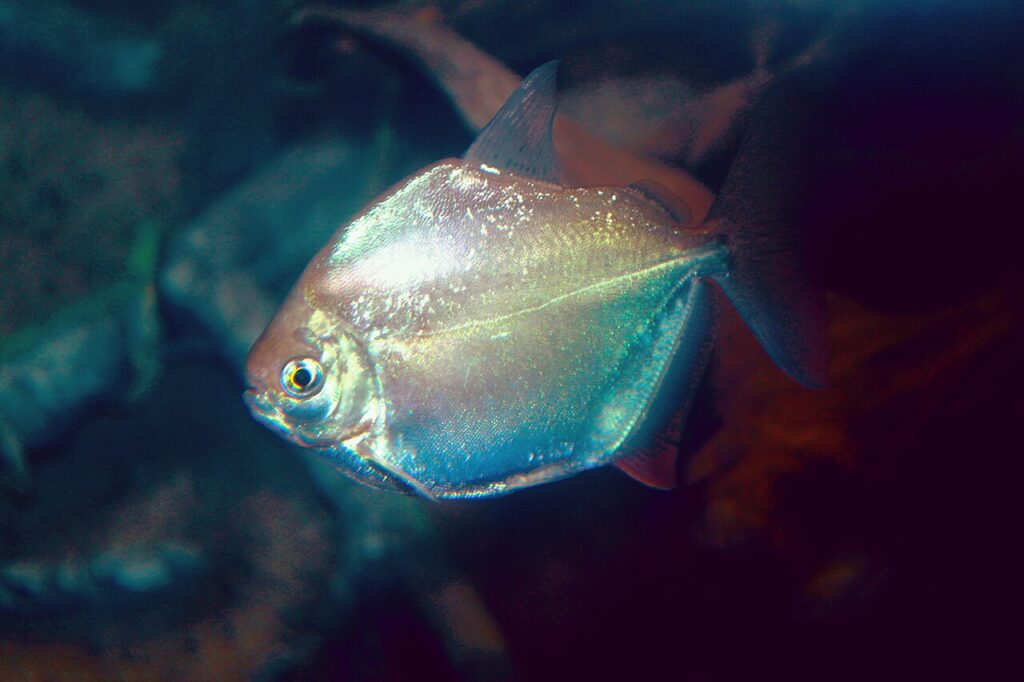
Silver Dollars are excellent companions for Chocolate Cichlids. Their peaceful nature and similar size make them a great match. These fish prefer the middle to upper levels of the tank, complementing the Chocolate Cichlid’s preference for lower areas.
| Common/Market Names | Silver Dollar, Money Fish |
| Price Range | $10 – $20 |
| Care Level | Easy |
| Behavior | Peaceful, Schooling |
| Life Span | 10 – 15 years |
| Max Size | 6 inches |
Angelfish
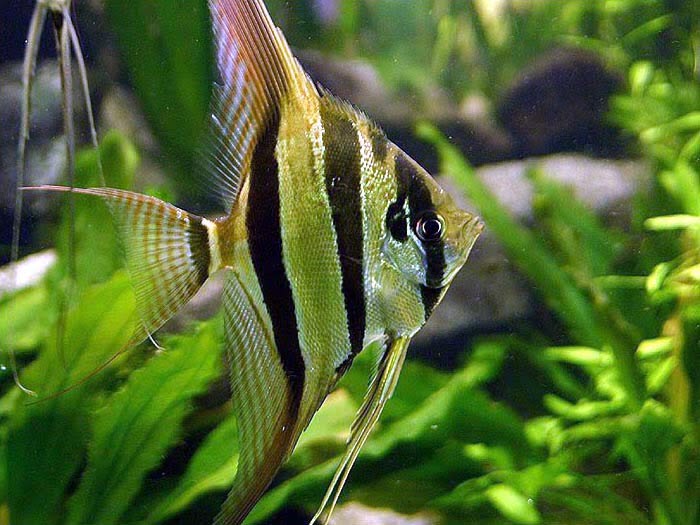
Angelfish share the same family as Chocolate Cichlids, making them natural tank mates. Their tall, elegant bodies add vertical interest to the aquarium while occupying different swimming levels.
| Common/Market Names | Freshwater Angelfish, Scalare |
| Price Range | $5 – $30 |
| Care Level | Moderate |
| Behavior | Semi-aggressive |
| Life Span | 8 – 12 years |
| Max Size | 6 inches (body height) |
Corydoras Catfish
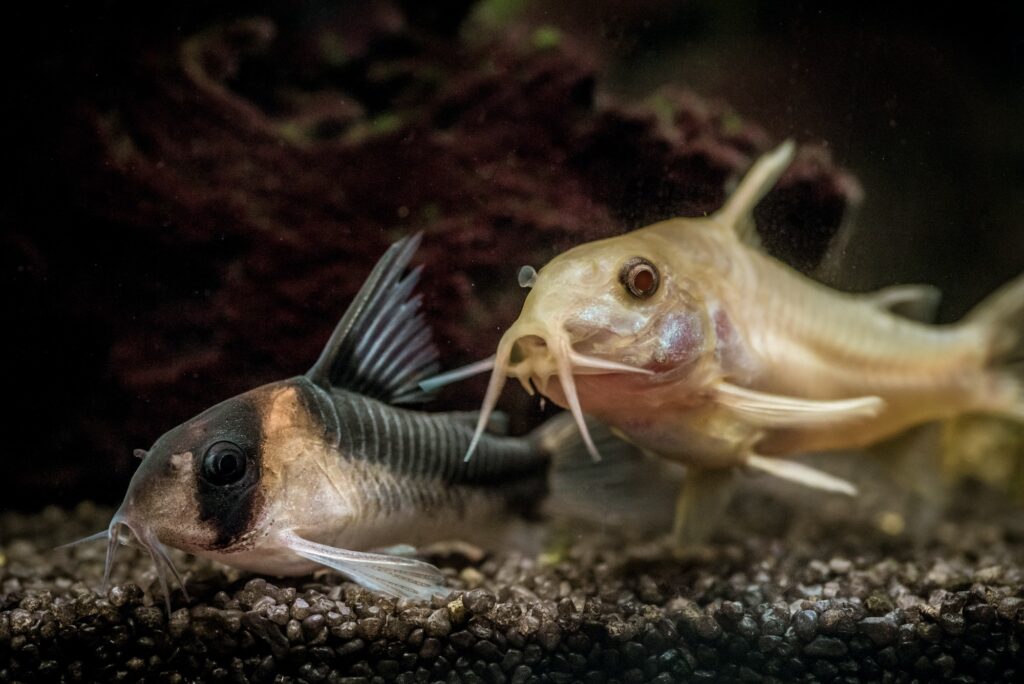
These bottom-dwelling catfish are perfect companions for Chocolate Cichlids. They help keep the substrate clean and their small size means they won’t compete for territory.
| Common/Market Names | Cory Catfish, Armored Catfish |
| Price Range | $3 – $15 |
| Care Level | Easy |
| Behavior | Peaceful, Schooling |
| Life Span | 3 – 5 years |
| Max Size | 2 – 4 inches |
Bolivian Ram
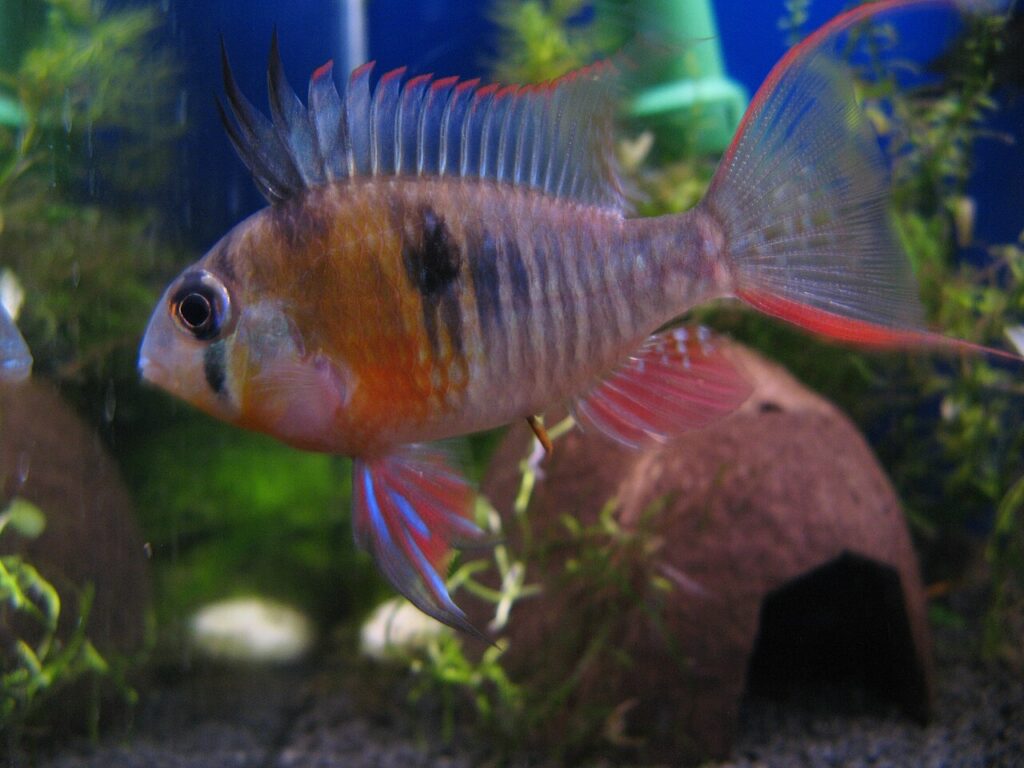
Another cichlid species, Bolivian Rams are smaller and more docile than many of their relatives. They occupy similar areas of the tank but their smaller size reduces competition.
| Common/Market Names | Bolivian Butterfly, Ruby Crown Cichlid |
| Price Range | $8 – $15 |
| Care Level | Moderate |
| Behavior | Peaceful |
| Life Span | 3 – 5 years |
| Max Size | 3 inches |
Plecostomus
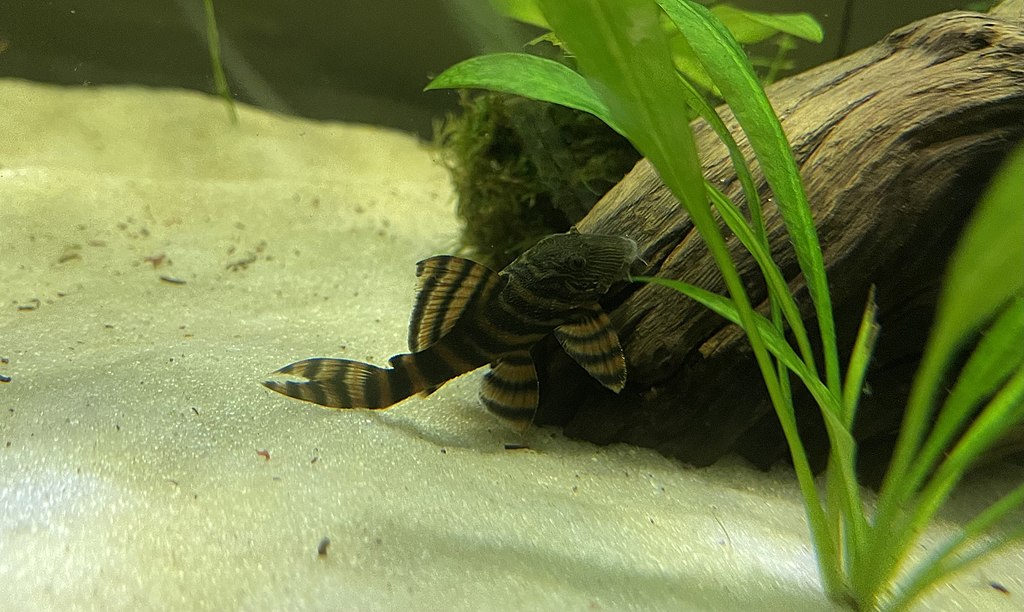
These algae-eating catfish are great tank mates for Chocolate Cichlids. They help keep the tank clean and mostly stay out of the way of other fish.
| Common/Market Names | Pleco, Suckermouth Catfish |
| Price Range | $5 – $30 |
| Care Level | Easy |
| Behavior | Peaceful |
| Life Span | 10 – 15 years |
| Max Size | 6 – 24 inches (species dependent) |
Rainbowfish
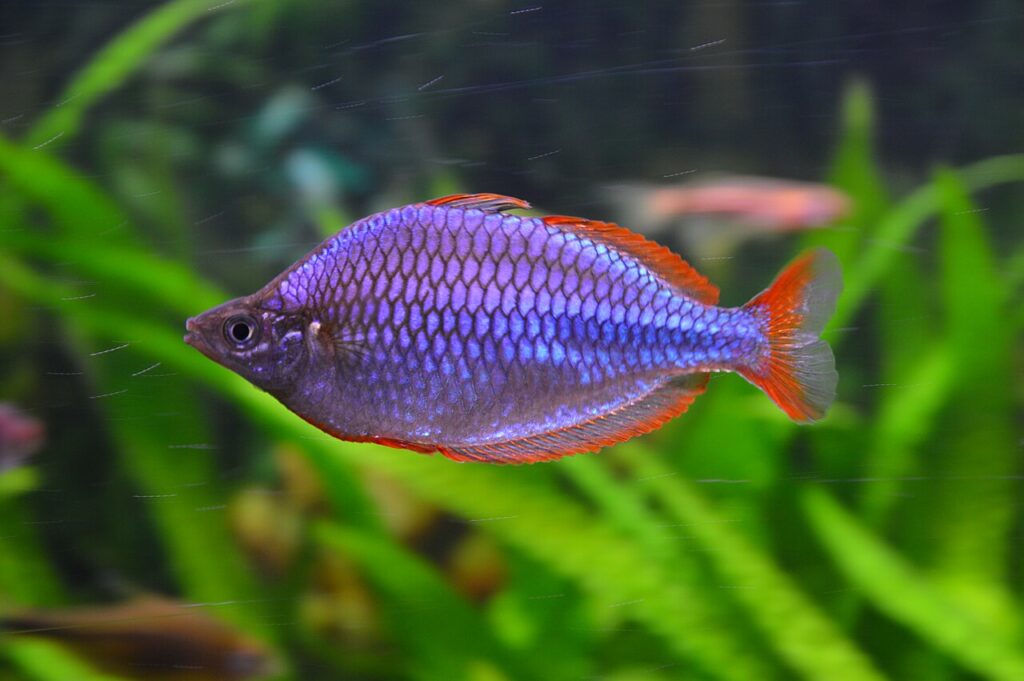
Rainbowfish add vibrant colors to the tank and occupy the upper levels, making them ideal tank mates for the Chocolate Cichlid.
| Common/Market Names | Boesemani Rainbow, Red Rainbow |
| Price Range | $5 – $20 |
| Care Level | Moderate |
| Behavior | Active, Schooling |
| Life Span | 5 – 8 years |
| Max Size | 4 – 6 inches |
Giant Danio
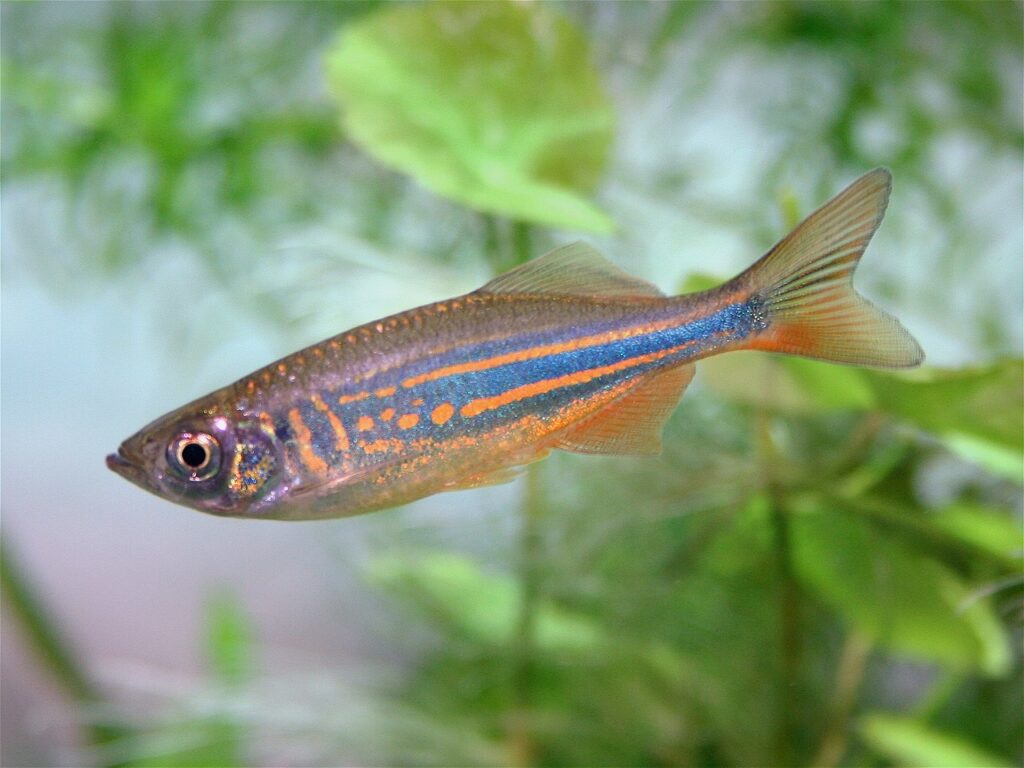
These large, active fish are great dither fish for Chocolate Cichlids. They occupy the upper levels of the tank and their constant movement can help reduce aggression in cichlids.
| Common/Market Names | Malabar Danio, Blue Danio |
| Price Range | $3 – $8 |
| Care Level | Easy |
| Behavior | Active, Schooling |
| Life Span | 5 – 7 years |
| Max Size | 4 – 5 inches |
Severum
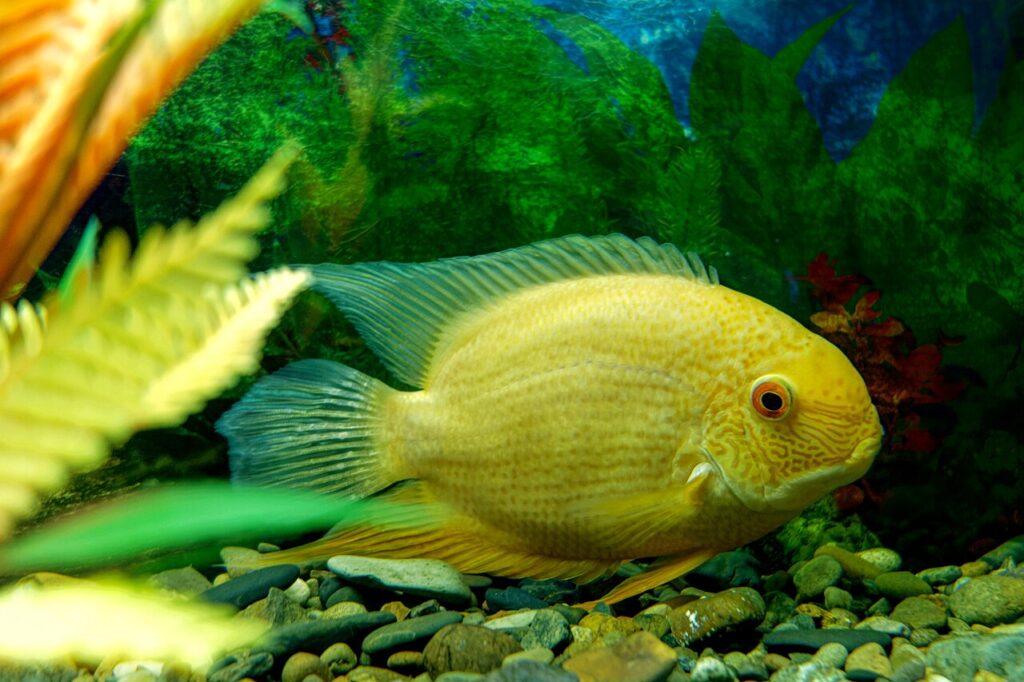
Another cichlid species, Severums are generally peaceful and share similar care requirements with Chocolate Cichlids. Their larger size means they can hold their own in the tank.
| Severum | |
|---|---|
| Common/Market Names | Banded Cichlid, Hero Cichlid |
| Price Range | $10 – $30 |
| Care Level | Moderate |
| Behavior | Semi-aggressive |
| Life Span | 10 – 15 years |
| Max Size | 8 – 10 inches |
Leopard Bush Fish
These unique fish add interest to the tank and are compatible with Chocolate Cichlids due to their peaceful nature and similar size.
| Common/Market Names | African Leaf Fish, Spotted Bush Fish |
| Price Range | $15 – $30 |
| Care Level | Moderate |
| Behavior | Peaceful, Predatory |
| Life Span | 8 – 10 years |
| Max Size | 6 inches |
Roseline Shark
Despite their name, these fish are actually peaceful barbs. They add a splash of color to the tank and their active swimming helps keep Chocolate Cichlids engaged.
| Common/Market Names | Denison Barb, Red-line Torpedo Barb |
| Price Range | $10 – $20 |
| Care Level | Moderate |
| Behavior | Peaceful, Schooling |
| Life Span | 5 – 8 years |
| Max Size | 6 inches |
FAQs about Chocolate Cichlid
How often should I feed my Chocolate Cichlid?
Feed your Chocolate Cichlid small amounts 2-3 times a day. Only give as much food as they can eat in about 2 minutes to avoid overfeeding.
Can Chocolate Cichlids live in a community tank?
Yes, they can live in community tanks with other peaceful fish of similar size. However, they may become territorial during breeding.
Do Chocolate Cichlids need special lighting?
They don’t need special lighting, but moderate lighting can enhance their colors and support live plants in the tank.
How can I tell if my Chocolate Cichlid is healthy?
A healthy Chocolate Cichlid will have clear eyes, intact fins, and smooth scales. They should be active and eat regularly.
Are Chocolate Cichlids good for beginners?
While not the most difficult, they’re better suited for aquarists with some experience due to their size and specific care needs.
How many Chocolate Cichlids should be kept together?
It’s best to keep them in pairs or small groups of 4-6 in a large enough tank to reduce aggression.
Can Chocolate Cichlids change color?
Yes, their color can change based on mood, stress levels, and during breeding seasons.
Do Chocolate Cichlids need a heater in their tank?
Yes, they prefer warm water and need a heater to maintain a stable temperature between 75-82°F.
How often should I clean my Chocolate Cichlid’s tank?
Perform partial water changes of about 25% every 1-2 weeks, and clean the substrate monthly.
Can Chocolate Cichlids recognize their owners?
Many cichlid owners report that their fish seem to recognize them. They may swim to the front of the tank when their owner approaches.